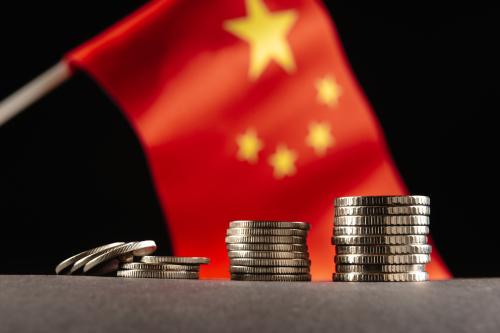China’s Belt and Road Initiative has sparked concerns in some circles that it is a master plan to provide abundant financing for—and therefore gain influence within—a broad swath of states across Eurasia. But newly released data indicate that Chinese lending in recent years is indiscriminate in terms of geography and quality of governance—suggesting that it is demand-driven rather than supply-driven by Chinese planning.
The data
Kudos to Aid Data at William & Mary for publishing updated and improved estimates of development finance from China. Aid Data estimates that worldwide China lent $40 billion per year in recent years, with transport and power generation the two main sectors financed.
But only about one-fourth of the financing meets the standard of foreign aid. This should not be a surprise, as China itself claims not to be a donor, but rather to be engaged in “win-win” cooperation with other developing countries.
Given the scale of this effort, the Chinese government should publish detailed data on the amounts that it is lending to different countries, the specific projects financed, and the terms of the loans. In the absence of official data, this academic effort from Aid Data is extremely welcome. The methodology involves using media reports to identify projects and then following up with recipient countries’ financial data, the International Monetary Fund (IMF), and Chinese embassies and ministries. The objective is to estimate the loan commitments from China, much of which is coming from the policy banks: the China Development Bank and the Export-Import Bank of China (China EXIM). There will inevitably be some errors about project details, as well as omitted projects, but as long as a consistent methodology is applied, it will accurately capture the broad trends. These data are invaluable for understanding China’s emergence as a major funder of infrastructure in the developing world.
Follow the money
I used the data to look at China’s Belt and Road Initiative. This is the Chinese vision of restoring the ancient Silk Road through Central Asia as well as enhancing the infrastructure along a “maritime route” from China through the South China Sea and the Indian Ocean, to Europe. The most recent year in the dataset is 2014. I used the data for 2012-14, as the belt and road is a relatively recent initiative.
So far, the initiative has had only limited impact on China’s development finance. Less than half of China’s financing has gone to the Asian economies along the belt and road. In fact, China’s lending seems quite scattershot geographically. The map shows the top 20 borrowers from China between 2012 and 2014. Several are along the belt and road: Kazakhstan, Indonesia, Lao, Cambodia, Sri Lanka, Pakistan, and Iran. But there are more African than Asian countries on the list, including Angola, Nigeria, Cote d’Ivoire, and South Africa, none of which is along any route from China to Europe. Argentina, Ecuador, and Venezuela in Latin America are also major borrowers.

Nor does Chinese lending appears to discriminate based on the recipient countries’ governance. The map is color-coded so that countries that perform better than average (for the developing world) on rule of law are green (the better the governance, the greener the country). Countries below the mean are in red. It is clear at a glance (and true more systematically) that Chinese lending is uncorrelated with governance. Major borrowers with better than average governance include Kazakhstan, Indonesia, South Africa, Kenya, Tanzania, and Ethiopia. The borrowers with poor rule of law include Cambodia, Lao, Pakistan, Iran, Angola, Nigeria, Sudan, and Venezuela.
Private investors use rule of law measures as risk indicators. The danger for China is that it is lending lots of money to risky countries, generally on commercial terms. In a poor governance environment, projects are less likely to proceed well and to generate growth, creating repayment difficulties. I took a quick look at external debt indicators for the top 20 borrowers. As a group, they have seen a significant rise in their external-debt-to-GDP ratio however, the average level so far is not alarming. Some countries in the group, though, are clearly having trouble servicing their debts, notably Angola and Venezuela. China has already had to reschedule the debt for Venezuela and will likely end up losing a large amount of money there. On the other hand, China’s loans to the countries with better governance, such as South Africa, Indonesia, and the East African states, will probably produce needed infrastructure and faster growth.
The fact that Chinese lending in recent years is indiscriminate in terms of geography and governance suggests that it is demand-driven rather than supply-driven by a Chinese master plan. Clearly a large and diverse group of developing countries welcome Chinese financing for infrastructure. China is filling a gap that arises because the private market does a poor job of financing long-term infrastructure investments and the existing developing banks lack the financing and flexibility to meet the growing infrastructure needs. Aid Data is an essential tool for understanding this development.







Commentary
Where is China’s development finance really going?
October 12, 2017